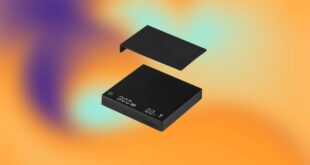What is the best internet provider in San Antonio?
CNET’s pick for the best internet service provider in San Antonio is AT&T Fiber. It wasn’t an easy pick as there was plenty of close competition. AT&T Fiber and Google Fiber were on top of our list with the zippy fiber speeds, but you also have solid choices from reliable cable connections like Spectrum.
San Antonio’s most famous attraction, the Alamo, is mythologized as a tale of brave, defiant loss. This Lone Star State city is a frontrunner regarding the speed of its broadband connections. Of the country’s top 100 cities, San Antonio landed in the top 10 for the fastest fixed internet speeds on average.
What does that mean for you? You’ll have plenty of choices if you live in the San Antonio-New Braunfels area or plan to move there. Even if you venture beyond city limits, you should have some reasonable options. If not, satellite providers like Hughesnet and Viasat ensure you can get your home online. Before you go that route, explore fixed wireless solutions, including 5G home internet, which continues to make significant strides.
Best internet in San Antonio, Texas
San Antonio internet providers compared
| Provider | Internet technology | Monthly price range | Speed range | Monthly equipment costs | Data cap | Contract | CNET review score |
|---|---|---|---|---|---|---|---|
| Astound Broadband Read full review |
Cable | $20-$55 | 300-1,500Mbps | None | None | None | 7 |
| AT&T Home Internet Read full review |
DSL hybrid | $70 | 10-100Mbps | None | 1.5TB | None | 7.4 |
| AT&T Fiber Read full review |
Fiber | $65-$255 | 300-5,000Mbps | None | None | None | 7.4 |
| Frontier Communications Read full review |
DSL/Fiber | $40-$310 | 200-7,000Mbps | None | None | None | 6.3 |
| Google Fiber Read full review |
Fiber | $70-$150 | 1,000-8,000Mbps | None | None | None | 7.4 |
| Ranch Wireless | Fixed wireless | $30-$120 | 1-25Mbps | $249 one-time fee | 30-200GB on some plans | None | N/A |
| Rise Broadband Read full review |
Fixed wireless/Fiber | $55-$95 | 50-1000Mbps | $10 modem; $5-$15 router (optional) | None | None, but required for some promotions | 6.2 |
| Spectrum Read full review |
Cable | $30-$60 | 300-1,000Mbps | Free modem; $7 router | None | None | 7.2 |
| T-Mobile Home Internet Read full review |
Fixed wireless | $55-$75 ($40-$50 for eligible mobile customers) | 72-245Mbps | None | None | None | 7.4 |
| Verizon 5G Home Internet Read full review |
Fixed wireless | $60-$80 ($35-$45 with qualifying Verizon 5G mobile plans) | 50-1,000Mbps | None | None | None | 7.2 |
Show more (5 items)
Source: CNET analysis of provider data.
Other available internet providers in San Antonio
You can find many broadband options across the San Antonio-New Braunfels metropolitan region. Availability is dependent on your address, but you may be able to find some appealing choices beyond our highlighted picks.
- Astound Broadband: You’ll be hard-pressed to find better starting rates in the region than what you’ll get from this cable internet provider. In San Antonio, Astound’s cheapest plan is a 300Mbps tier for $20 per month. About six cents per Mbps is excellent value for a provider’s opening offering. Most ISPs, especially cable providers, will have a starting plan of around 50 to 100Mbps. If you’re looking for speed, Astound’s fastest plan — 1,500Mbps — is also one of the best values in the city, costing around 4 cents per Mbps, or $55 monthly. All Astound plans come with a two-year price guarantee but beware of a potentially steep increase afterward.
- Frontier Communications: You can’t get Frontier anywhere within San Antonio city limits. The provider’s mix of DSL and fiber service is an option to the southeast, specifically in the suburb of Floresville. Similar to our guidance on AT&T service, you’ll want to check your address to see if you can get fiber service rather than DSL. Frontier Fiber is an appealing choice with symmetrical plans of 200Mbps, 500Mbps, gigabit, 2Gbps, 5Gbps or 7Gbps. You could probably do better if you get the slower, less reliable DSL.
- Ranch Wireless: This rural wireless provider covers markets throughout south-central Texas. While it doesn’t operate in San Antonio, it does reach many towns on the outskirts, including New Braunfels in the northeast, Adkins and Calaveras in the east, and several rural locations to the south, including Campbellton, Charlotte, Jourdanton and Pleasanton. Ranch Wireless features plans ranging from $30 per month for 1Mbps download and 30GB of data to $120 monthly for unlimited data and 25Mbps download speed.
- Rise Broadband: This fixed wireless provider offers internet service on the far east and upper northwest portion of San Antonio. It offers speeds up to 1000Mbps and unlimited data too. That makes it an especially viable option for residents outside city limits, in towns like Floresville, Jourdanton, Pleasanton and San Geronimo. Though plan availability will vary according to your region.
- Satellite internet: If you live in San Antonio proper, you should have little need for satellite internet service. There are much faster (and cheaper) alternatives to be found. Suppose you’re one of the many suburban and rural San Antonio-New Braunfels region residents. In that case, you might have reason to consider Hughesnet or Viasat, the leading satellite broadband provider. A big drawback to both is they each require a two-year contract commitment. Elon Musk’s Starlink has them beat on that front — it nixes all term contract agreements. Your equipment still requires a steep upfront cost of nearly $600.
- Verizon 5G Home Internet: This provider’s 5G fixed wireless home internet product has a higher average download speed (300Mbps) than T-Mobile Home Internet and also claims a similar all-in price that includes all equipment and fees for $60-80 per month ($35-$45 per month for customers with qualifying Verizon 5G mobile plans). Why have I listed T-Mobile higher? Verizon’s coverage is strongest in metro areas, while T-Mobile flexes its muscles more capably in rural areas. That better fits the San Antonio-New Braunfels region.
Cheap internet options in San Antonio
The average starting price for home internet in San Antonio is approximately $46 a month. That considers the promo prices you’ll get at the beginning, not the standard rates you’ll get hit with a year or so later. The lowest starting price in the River City is Astound Broadband’s 300Mbps plan for $20 monthly. For about six cents per Mbps, it is a great value for a less expensive internet option.
What’s the cheapest internet plan in San Antonio?
Show more (5 items)
Source: CNET analysis of provider data.
How to find internet deals and promotions in San Antonio
The best internet deals and promotions in San Antonio depend on what discounts are available during a given time. Most deals are short-lived, but we check frequently for the latest offers.
San Antonio internet providers, such as Astound Broadband, Spectrum and Rise Broadband, may offer lower introductory pricing or streaming add-ons for a limited time. Others, including AT&T, Frontier, Google Fiber and Verizon, run the same standard pricing year-round.
For a more extensive list of promos, check out our guide on the best internet deals.
How fast is San Antonio broadband?
As I mentioned earlier, the River City is one of the fastest broadband cities in Texas and one of the country’s fastest cities when it comes to internet download speeds. According to the latest results from the speed-testing site Ookla, which tracks city speeds based on daily tests run by customers across the US, San Antonio residents enjoy median download speeds of over 271Mbps and median uploads of approximately 38Mbps. This solidifies the San Antonio metro area in the country’s top 10, ahead of kindred Texas cities like Dallas and Houston.
The city’s impressive internet speed numbers are undoubtedly buoyed by the fiber internet service of AT&T (which features a 5Gbps plan in some areas of the city), Frontier Fiber (which also boasts a 7-gig plan) and Google Fiber, whose cheapest (and slowest) plan is a full gigabit and fastest is an 8-gig offering.
Fastest internet plans in San Antonio
| Provider | Max download speed | Max upload speed | Monthly price | Data cap | Internet technology |
|---|---|---|---|---|---|
| Google Fiber 8 Gig Read full review |
8,000Mbps | 8,000Mbps | $150 | None | Fiber |
| Frontier Fiber 7 Gig Read full review |
7,000Mbps | 7,000Mbps | $310 | None | Fiber |
| Google Fiber 5 Gig Read full review |
5,000Mbps | 5,000Mbps | $125 | None | Fiber |
| Frontier Fiber 5 Gig Read full review |
5,000Mbps | 5,000Mbps | $140 | None | Fiber |
| AT&T Fiber 5000 Read full review |
5,000Mbps | 5,000Mbps | $255 | None | Fiber |
| Google Fiber 2 Gig Read full review |
2,000Mbps | 2,000Mbps | $100 | None | Fiber |
| Frontier Fiber 5 Gig Read full review |
2,000Mbps | 2,000Mbps | $110 | None | Fiber |
| AT&T Fiber 2000 Read full review |
2,000Mbps | 2,000Mbps | $155 | None | Fiber |
| Astound Broadband 1500 Read full review |
1,500Mbps | 50Mbps | $55 | None | Cable |
| Astound Broadband 1000 Read full review |
1,000Mbps | 50Mbps | $45 | None | Cable |
| Google Fiber 1 Gig Read full review |
1,000Mbps | 1,000Mbps | $70 | None | Fiber |
| Frontier Fiber 1 Gig Read full review |
1,000Mbps | 1,000Mbps | $75 | None | Fiber |
| AT&T Fiber 1000 Read full review |
1,000Mbps | 1,000Mbps | $90 | None | Fiber |
| Spectrum Internet Gig Read full review |
1,000Mbps | 35Mbps | $60 | None | Cable |
| Verizon 5G Home Plus Internet Read full review |
1,000Mbps | 75Mbps | $80 ($45 with eligible mobile plan) | None | Fixed wireless |
Show more (10 items)
Source: CNET analysis of provider data.
Internet providers in popular cities near San Antonio
See all results for internet providers in Texas.
What’s a good internet speed?
Most internet connection plans can now handle basic productivity and communication tasks. If you’re looking for an internet plan that can accommodate videoconferencing, streaming video or gaming, you’ll have a better experience with a more robust connection. Here’s an overview of the recommended minimum download speeds for various applications, according to the FCC. Note that these are only guidelines and that internet speed, service and performance vary by connection type, provider and address.
For more information, refer to our guide on how much internet speed you really need.
- 0 to 5Mbps allows you to tackle the basics: browsing the internet, sending and receiving email and streaming low-quality video.
- 5 to 40Mbps gives you higher-quality video streaming and videoconferencing.
- 40 to 100Mbps should give one user sufficient bandwidth to satisfy the demands of modern telecommuting, video streaming and online gaming.
- 100 to 500Mbps allows one to two users to simultaneously engage in high-bandwidth activities like videoconferencing, streaming and online gaming.
- 500 to 1,000Mbps allows three or more users to engage in high-bandwidth activities at the same time.
How CNET chose the best internet providers in San Antonio
Internet service providers are numerous and regional. Unlike the latest smartphone, laptop, router or kitchen tool, it’s impractical to personally test every ISP in a given city. What’s our approach? We start by researching the pricing, availability and speed information drawing on our own historical ISP data, the provider sites and mapping information from the Federal Communications Commission at FCC.gov.
It doesn’t end there: We go to the FCC’s website to check our data and ensure we consider every ISP that provides service in an area. We also input local addresses on provider websites to find specific options for residents. We look at sources, including the American Customer Satisfaction Index and J.D. Power, to evaluate how happy customers are with an ISP’s service. ISP plans and prices are subject to frequent changes; all information provided is accurate as of publication.
Once we have this localized information, we ask three main questions:
- Does the provider offer access to reasonably fast internet speeds?
- Do customers get decent value for what they’re paying?
- Are customers happy with their service?
While the answers to those questions are often layered and complex, the providers that come closest to “yes” on all three are the ones we recommend. When selecting the cheapest internet service, we look for the plans with the lowest monthly fee, although we also factor in things like price increases, equipment fees and contracts. Choosing the fastest internet service is relatively straightforward. We look at advertised upload and download speeds and consider real-world speed data from sources like Ookla and FCC reports.
To explore our process in more depth, visit our how we test ISPs page.
What’s the bottom line on San Antonio internet providers?
We mention it often in our CNET home internet reviews, but it bears repeating: All things being equal, fiber internet service trumps other internet connection types every time. What matters is what’s available at your address. You’re in great shape if you can get AT&T Fiber or Google Fiber. If not, there are still affordable cable options — like Astound Broadband and Spectrum — that’ll get you plenty of speed and decent reliability.
Internet providers in San Antonio FAQs
Is fiber internet available in San Antonio?
Yes. AT&T is the area’s most widely available fiber provider, but ensure you’re serviceable for its fiber service, not DSL. Google Fiber is also available within city limits. Some suburban areas might also have access to Frontier Fiber and Rise Broadband’s fiber plans, although these will be much more scarce.
What is the cheapest internet provider in San Antonio?
Astound Broadband wins for the cheapest internet plan. In San Antonio, Astound’s 300Mbps plan is only $20 per month, which comes out to six cents per Mbps. Sticking with overall value, Astound’s 1,500Mbps plan, at $55 monthly, is a great deal at 4 cents per Mbps.
Only one other Alamo City provider has a better value plan. Frontier’s 5 Gig plan is $140 per month, which features a cost of about 3 cents per Mbps.
Which internet provider in San Antonio offers the fastest plan?
Based solely on download speed, Google Fiber offers the fastest available plan at 8Gbps. Among other providers, Frontier has a 7Gbps plan and AT&T has a 5Gbps option. Speed test data says Google Fiber is the fastest provider in San Antonio for median download speeds, at over 323Mbps. That information comes from Ookla, a company that quarterly ranks all ISPs nationwide based on customer-run data.
 synnbiob
synnbiob


